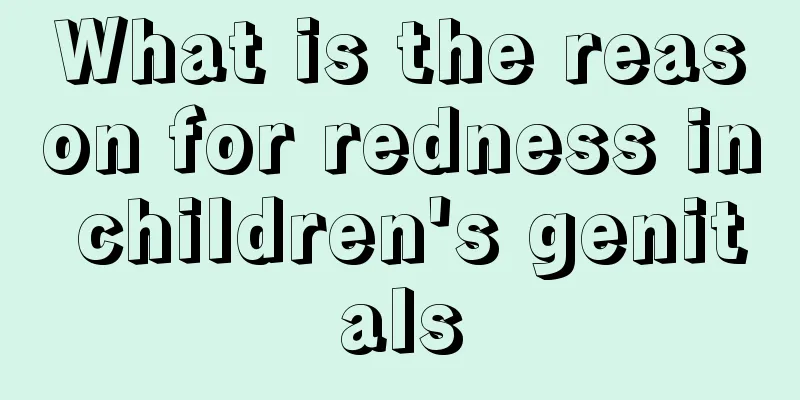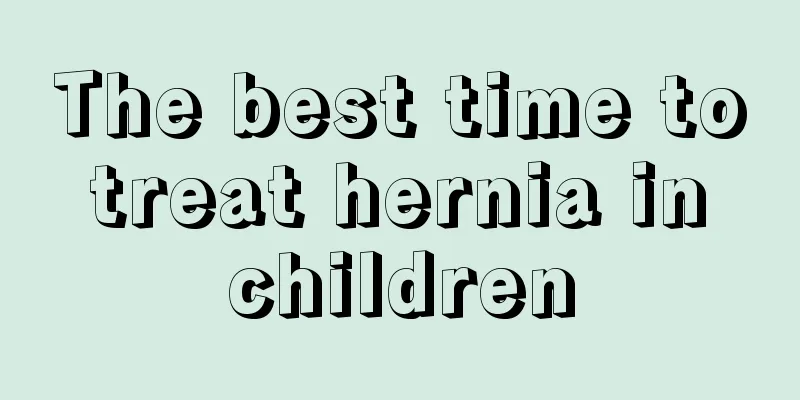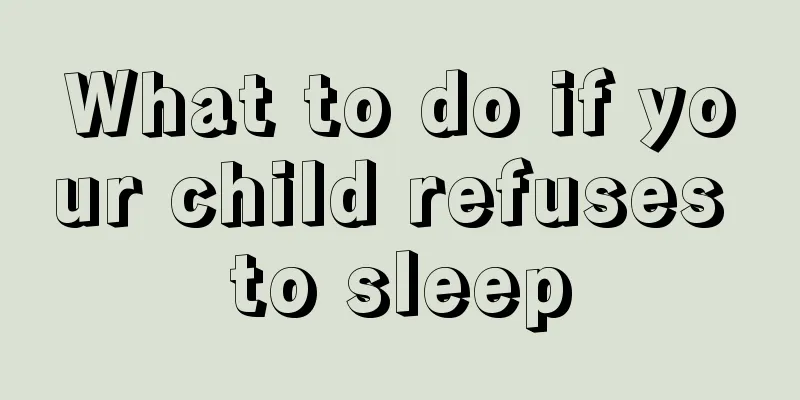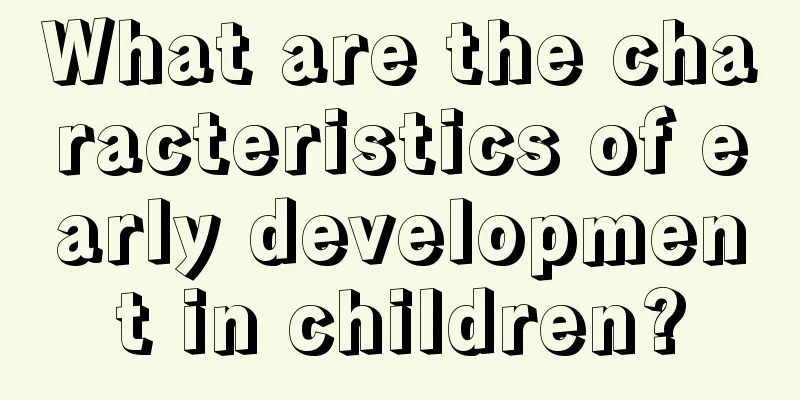Why does a child have a viral infection and cough?
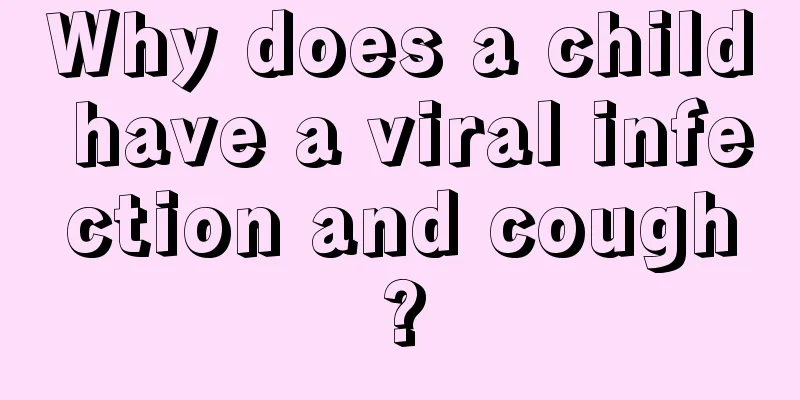
|
As the saying goes, every child has nine coughs. The baby's respiratory tract is still very fragile and not fully developed, so if there is any disturbance, the baby will often develop respiratory diseases. Some babies will develop cough due to viral infection. What is going on? Next, let’s ask an authoritative expert to explain to you why children have viral infection and cough. From a medical point of view, a baby's cough is a defensive reflex of the body to expel respiratory secretions or foreign objects. In other words, coughing is a protective physiological phenomenon for babies. But if the coughing is too severe and affects diet, sleep and rest, then it loses its meaning of protecting the baby. Age of coughing If a newborn baby has a cough, you should be careful about diseases such as aspiration pneumonia and congenital lung developmental abnormalities. Cough in older children is generally more common in respiratory tract infections. If a preschool baby coughs, airway infection and foreign bodies in the airway should be taken into consideration. Coughing time: If your baby coughs in the morning, it is most likely a chronic disease, such as chronic inflammation of the upper respiratory tract and chronic bronchitis. If your baby coughs at night, it may be caused by diseases such as whooping cough and acute spasmodic laryngitis. Baby coughing action analysis A baby's cough can be broken down into four actions: short and deep inhalation; glottis closing; contraction of the diaphragm and intercostal muscles, increased intrapulmonary pressure; opening of the glottis, and the high-pressure air in the lungs is squeezed and ejected under the rapid contraction of the diaphragm. It is these four consecutive actions that combine to form a complete "coughing" process, and at the same time determine that coughs have different natures, rhythms, sounds and characteristics. The nature of the cough is dry cough or irritating cough: it is more common in diseases such as upper respiratory tract infection, tracheitis, pneumonia, bronchial foreign body, etc. Wet cough or phlegm cough: more common in diseases such as bronchitis, bronchiectasis, lung abscess, tuberculosis, etc. The rhythm of cough: single cough: more common in diseases such as laryngitis and tracheitis. Paroxysmal or spasmodic cough: common in diseases such as tracheal foreign body, whooping cough, bronchial asthma, etc. Periodic cough: common in diseases such as chronic bronchitis and bronchiectasis. Listen to the sound and identify the disease! The baby is so smart. He will look at you with his big eyes to convey his happiness. He can tell you his pain with different crying sounds. He can also remind you through different "coughing" sounds, "Mom, I need your help..." The baby makes a "hollow" cough, which sounds like a puppy barking. This is a unique manifestation of acute laryngitis! Acute laryngitis is an acute inflammation of the laryngeal mucosa. It may be a primary disease, part of an acute upper respiratory tract infection, or a complication of other acute infectious diseases. Most of them are caused by bacterial infection following viral invasion, with cold, fatigue, etc. as the triggering factors. The baby will experience dry, itchy or painful throat, followed by hoarseness, and in severe cases, complete loss of voice. The foreign body sensation in the larynx often causes breathing difficulties and may even lead to laryngeal obstruction, which is life-threatening! The baby seems to be choking and has severe "choking coughing". At this time, you should pay attention to foreign objects in the airway. Airway foreign bodies are more common in babies under five years old. For example, small objects such as food, medicine, metal, and plastic may enter the respiratory tract due to improper feeding, bad eating habits, and accidental aspiration. Babies often experience severe choking, shortness of breath, nausea, and vomiting at the beginning. Some may develop secondary infections, atelectasis, or even bronchiectasis. Severe cases can lead to breathing difficulties, cyanosis, and sudden death! If the baby's cough is paroxysmal and spasmodic, with a "cock-crowing" sound at the end, it is likely a manifestation of whooping cough syndrome. Whooping cough is a common respiratory infectious disease in babies, caused by infection with Haemophilus pertussis. The only source of infection of this disease is the patient. The general population is susceptible, especially babies who have not been properly vaccinated with the diphtheria, pertussis and tetanus triple vaccine. Once a baby is infected with whooping cough, he or she will go through an incubation period, an inflammatory period, a spasmodic cough period, and a recovery period. The cough in the inflammatory period is not much different from an ordinary cough. In the spasmodic cough period, there will be series of continuous coughs lasting from several to dozens of times. Then, because the lungs urgently need to ventilate, a deep inhalation will be taken, and a large amount of gas will quickly rush through the glottis and make a high-pitched "cockroach-like cry." Spasmodic coughs often occur in waves, until they lead to vomiting, cyanosis, and difficulty breathing. If your baby has an "irritating dry cough" and it recurs repeatedly, bronchial asthma should be considered. Bronchial asthma is a common respiratory allergic disease in children. It is related to genetics and the body's immune system. There is often a similar medical history in the family, and the baby himself has low cellular immune function. Generally speaking, inhalation of allergens such as dust, pollen, mites, smoke, infection with viruses, bacteria, mycoplasma, sudden changes in temperature, cold stimulation, excessive exercise, emotional imbalance, certain drugs, special foods, etc. can all trigger its attacks. Bronchial asthma can be clinically divided into three stages. In stage 1, the cough is an irritating dry cough, and wheezing sounds can occasionally be heard. In stage 2, wheezing is the main symptom. The baby will breathe deeper and harder due to "shortness of breath", resulting in prolonged exhalation. By stage 3, severe bronchial obstruction or spasm may have already occurred, and the baby may suffer respiratory failure due to worsening wheezing and shortness of breath. The above is the relevant article about why children have viral infection cough. I hope that after reading the above content, everyone will have a comprehensive understanding of children’s viral infection cough. Parents must take good care of their babies. |
<<: Is traditional Chinese medicine effective for children’s colds?
>>: What to do if your child has an itch?
Recommend
How long do newborn babies sleep?
After the child is born, parents will be concerne...
How to deal with yellow eye mucus in newborns
The physical health of newborns is something that...
White spots on the upper teeth of newborns
Experts say that the white spots on the upper tee...
How do children grow taller in spring?
Spring is here, it is a season of growth, because...
How to treat mental retardation in children
Many children suffer from mental retardation, whi...
Why does my baby not like to sleep?
Babies’ reluctance to sleep can be a headache for...
What should I do if my child has white spots in his throat?
Children have relatively poor resistance, so they...
Can babies eat eggs when they have a cold? Just pay attention to the relevant matters
If your baby is young, it is best not to eat eggs...
Treatment for babies who suddenly wake up from sleep
As parents, we are all worried when our children ...
Does your child have small white spots on his body?
In life, parents are very careful when taking car...
How to treat children's hallux valgus?
The condition of clubfoot can be discovered after...
What to do if your baby is stung by a bee?
The baby's skin is very tender, so we need to...
6 signs to prevent baby's illness
Here are some signs to keep in mind when bringing...
Is it really good for children to drink milk every day?
The nutritional value of milk itself is very high...
What to do if your 15-month-old baby walks unsteadily
What is the reason why children walk unsteadily? ...
